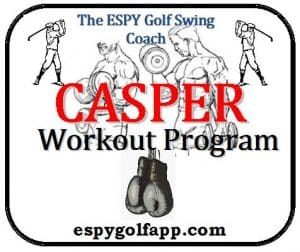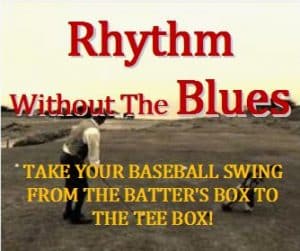The QATSPY Sports Page 4 Golfers

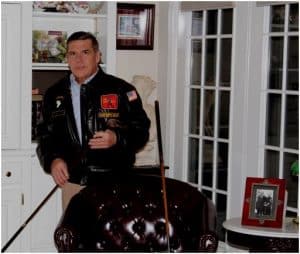
By: Charles W. Boatright
Author of The ESPY Golf Swing Coach, Delta Technique Geared for Distance and Control
The Triple Crown Performance- How to Develop a Qatspy Self-Coaching Forum in Golf

The TRIPLE CROWN, the golfer’s Key Performance
The Qatspy, The Triple Crown performance is a coaching forum for athlete to reach their peak performance by engaging their subconscious mind, the juggernaut of an athlete’s achievement. The QATSPY Coaching Forum is geared on how we learn and perform at various levels and under various conditions. The QATSPY Coaching forum is based on three fundamentals:
- The 10 Subconscious Rules of Engagement
- The ASPEN Coaching Pyramid
- The 3- Rings of ExtraSensory Performance.
Let’s look first at the last crown of The Triple Crown Performance components, the 3- Rings of ExtraSensory Performance, or ESP. The 3- Rings of ExtraSensory Performance is based on the same factors that lead to ExtraSensory Driving Performance or what is referred to as tunnel vision (also called Driving Hypnosis). I was discussing the term Driving Hypnosis with a top golf coach and instructor. His concern was that his athletes are scared of the term “Hypnosis.” But if you look closely at the three conditions that cause ESP Driving Performance, tunnel vision, or Driving Hypnosis, you can provide the athlete a better understanding and experience how they can reach their peak performance.

The Triple Crown Performance of Playing In-the-Zone
Most athletes, and especially golfers, search for some reference to their ZONE-like performance in their game, or what I refer to as ESP, ExtraSensory Performance. This goes back to the case of tunnel vision or Driving Hypnosis, but a better term to use instead of Driving Hypnosis is more like shifting one’s conscious attention. Driving Hypnosis is really a misnomer; it is more like refocusing your conscious attention by disengaging the thought process to allow the subconscious mind to perform in its natural state. This is by using well established muscle memory and motor skills that are already in the athlete’s tool box. This is similar to what happens to military personnel when they are confronted with a threatening situation, instead or reacting unpredictable, their training automatically kick-in and they respond in a predictable manner.
ExtraSensory Performance is like closing your physical eyes, something that Jason Day does during his pre-shot routine. This technique is called Sports Mental Imagery, or what is also called Mental Modeling. This allows the subconscious mind to use its well-developed muscle memory and motor skills to accomplish an objective.
To create this Mental Modeling, three conditions must be in place:
- Normal and routine tasks and conditions must exist.
- Rely on a high degree of relaxation, confidence, and muscle memory.
- The conscious and subconscious minds are focused on two different situations.
NOTE: While ExtraSensory Performance Driving is unsafe for driving a vehicle down the highway, because of tunnel vision, it works great for driving a golf ball down the fairway. Please use the link above to see the symptoms of ESP-Driving and how this can be applied to the golfer’s coaching process effectively.
I bold some key words in these three conditions that leads to ExtraSensory Performance like tunnel vision. The key word is conditions. If the golfer wants to improve their golf game the conditions that they practice under must resemble those on the golf course, This is This is Rule No. 6 in The 10 Subconscious Rules of Engagement listed below. The golfer is taking a page out of the football coach’s handbook called scrimmage-type practice and apply this type of training to their golf practice. Scrimmage while it not game-day conditions, it does provide similar conditions, especially adrenaline.
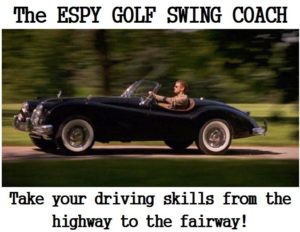
The ASPEN Golf Coaching Pyramid- Apperception
The second part of the Triple Crown Performance is the athlete needs to see how the subconscious mind engages to enhance the their performance.
The QATSPY forum for coaching is based on what is called Context-Base Learning or what I prefer to use, called Problem-Base Learning. There a distinct process of how the human brain works, both in sports and academics. You can maximize the athlete’s performance by developing a self-coaching system that the athlete can work on incrementally in short segments to improve the golfer’s routine, confidence, and focus.
Nick Faldo during the Quicken Loan Golf Tournament, mentioned the golfer has to learn to be their own golf coach on the course. The athlete who knows HOW instead of WHAT will always have a high level of performance.
The biggest misconception in athletics is that coaching is a physical component, but, in reality, the coaching process is focused more on the mental component in order to create the Mental Modeling process. Mental Modeling represents approximately 90 percent of the athlete’s performance. An great example of Mental Modeling is where the golfer during their pre-shot routine subconsciously steps through each element and golf swing sequence, a conscious process, and how each element in the golf swing sequence should feel, subconscious process. In the ESPY Golf Swing, this would be where the golfer can close their eyes and mentally visualize and feel each of the three Economical elements of Sync, Preset, and Yaw being established. In the three elements below is in reference to a right-handed golfer:
- Sync– the golfers right lower forearm and right elbow up with their shoulders by syncing the right Palmer Tendon with the left Pronator Quadratus muscle.
- Preset– the wrists to lock the right elbow with the shoulders by CAMMING-OVER the left Pronator Quadratus about the left Palmer Tendon.
- Yaw– allow the elbow to coil the shoulders and the core muscles. Like how a ten-speed bicycle sprockets function.
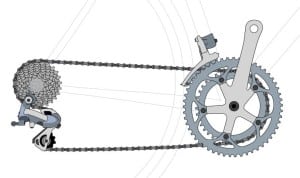
The ESPY Golf Swing is based on the mechanical advantage of how a ten-speed bicycle sprockets function to produce power and speed.
The following figure illustrates the establishment of Sync, Preset, and Yaw elements:
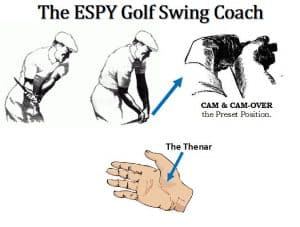

There are three key muscle memory points that I emphasize in coaching to preset wrist and lower forearm and take the handle of the club to the top of the golf swing. These muscles the golfer should take mental note of during your golf game and for their 405 Training Drill (for the right-hander) or scrimmage-type training for golfers is:
- Sync– The right Pronator Quadratus muscle with the reference point being the right Palmer Tendon. This syncs the right lower forearm (wristband) and elbow with the shoulders.
- Preset– The left Pronator Quadratus muscle with the reference point being the left Palmer Longus Tendon to preset the left wrist
- Yaw– The right Brachio-Radialis
My book goes into the sequence and techniques of setting the Sync, Preset, and Yaw elements for a golf swing to develop the distance and control that the golfer is looking for. Please use the links at the end of this article for more information on purchasing The ESPY Golf Swing Coach.
Yaw might be an unusual term to describe an element in the golfer’s swing, but YAW defines the process of how the shoulders horizontally coil perpendicular around a vertical axis, the spinal axis. Yaw is usually use in the aviation industry. But it is another visualization tool allowing the golfer to realize how the shoulders should be kept perpendicular to the golfer’s spinal axis during the takeaway swing. This creates a important checkpoint of placing the golfer’s lead shoulder under their chin at the top of their swing.

My grandfather at Yellowstone National Park in 1927 working on his coaching procedure for golf.
The athlete, or in this case, the golfer who knows HOW to Mental Model works in their golf swing will always have a higher level of performance. Also Mental Modeling allows the golfer to take a practice swing where the actual golf swing is like déjà vu all over again, according to Yogi Berra. You mind has already performed the golf shot in the virtual world, the golfer just has to finish the golf swing. Bobby Jones, Sr. realized this in his quote- Golf is a game that is played on a five-inch course – the distance between your ears.
There is a pyramid that I refer to that helps the golfer develop this Mental Modeling process featured below. This helps the golfer understand the coaching forum philosophy of HOW to achieve peak performance. The ASPEN Coaching Pyramid, in the figure below, was developed by my grandfather, Homer E. Q. Boatright, ( Q was his nickname- Qatspy).
The ASPEN Coaching Pyramid is based on using previously developed motor-skills like the baseball-style swing to help the golfer establish a reliable routine and condition to perform their golf swing. The biggest benefit in using the baseball-style swing by the golfer is you don’t see many Major League Baseball batter’s in the batter’s box thinking about their baseball swing techniques or mechanics, while looking at a 95-mph fastball, their swing is more an auto-response.
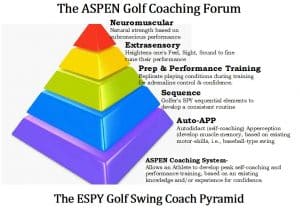
While I was in the process of writing my book, I played golf with a minor league baseball player with a triple-A team that played for LSU. I mentioned LSU, because of their notoriety for hitting coaches. The minor league player hadn’t played golf in several months, and he was still able to crush the ball right down the fairway. He had master control of his power and distance with precision, even around the green. He credited his baseball-style swing for his golf game.
At the base of the ASPEN Pyramid is the term Apperception. Apperception is the most significant part of both the coaching
and learning processes in sports. The Apperception is a technique used in coaching that takes advantage of a previous developed muscle memory and motor skill, like the tennis and baseball-style swing and allow the golfer to apply these to their golf swing sequence.
The golfer can develop a routine that allows them to apply the baseball-style swing directly to their golf game. As indicated in the time-lapse photo below, that I studied during my research for my book, I was able to compare the golf swing with the baseball-style swing to verify this Apperception theory. The benefit of Apperception is that it directly engages the athlete’s subconscious mind to anticipate and visualize their performance. Anticipation and visualization will guide the subconscious to engage and perform in a certain manner to fit the model. This is Rule No. 5 in The 10 Subconscious Rules of Engagement listed below.
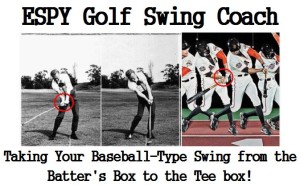
The ASPEN Coaching is the second crown in the Triple Crown performance.
The third part of the Triple Crown is how well the athlete can engage their subconscious mind. There are 10 Rules that govern the use of the subconscious mind in an athlete’s, or golfer’s, performance. The following are 10 Subconscious Rules of Engagement that are useful in an ASPEN self-coaching forum.
The 10 Subconscious Rules of Engagement:
- The subconscious mind does not differentiate between visualizations or virtual and real situations: I interviewed a Vietnam P.O.W., held at the Hanoi Hilton for seven-and-a-half years, who used his golf game to not only survive the brutal and horrendous conditions, but actually maintain his four (4) handicap at a PGA Pro-Am. This was less than two months after his release as a P.O.W. in February of 1973. He used his subconscious mind, Mental Modeling, to emulate course conditions and execute his golf swing each and everyday. See my interview link: Colonel George Robert Hall.
- Your subconscious feels that time passes faster: This means your subconscious mind can perceive real-time at a slower pace. This allowed Wade Boggs the ability to mentally slow down a 95-mph fast ball to a point where he actually saw the MLB Blue dot and red threads on the baseball. See my article on Wade Boggs.
- The longer the subconscious mind believes something, the harder it will be to alter this belief in any way: This can be an advantage, as well as a disadvantage. The advantage of this is the younger a person can develop correct motor-skills, like for a baseball-style swing, the more entrenched these skills are and the more consistent and confident the swing is for the batter to execute. Conversely, the disadvantage is true also in trying to change incorrect motor skills or a bad habit. This is one reason why the baseball-style golf swing offers kids great fundamental starting point for their golf swing. The golfer just needs to convince their subconscious mind that the baseball-style swing can actually be incorporated into their golf swing.
- Every thought causes a physical reaction: In regard to Colonel Hall’s case, his mental routine that he developed in his prison seven-and-a-half foot square cell at the Hanoi Hilton helped him maintain his muscle memory. He was able to mentally step through his routine, even without a golf club, just by using a stick or his lead thumb to represent the club. Another thought Colonel Hall had was to move the virtual golf ball from the floor of his cell up to his hands. This gave him the better sensation of impact with the virtual golf ball.
- What you expect tends to be realized: Your thoughts and expectations serve as the master plan or blueprint for your subconscious mind to follow. So, whenever you think of something, your subconscious mind will do its best to achieve it. This is the essence of Mental Modeling or ExtraSensory Performance (ESP).
- The subconscious mind always prevails in conflicts with the conscious mind: This is the single biggest hurdle, especially for golfers to overcome between how they practice and how they play. Most of the time, how the golfer practices doesn’t resemble conditions on the course; therefore, the subconscious mind reverts to what it has confidence in and disregard their practice or golf lessons. The golfer’s practice should resemble a scrimmage-type football practice. This includes the golfer dealing with adrenaline. This is why I developed the 405- Training Drill.
- An idea, once accepted, will remain firmly in place until it is replaced by another: This is the main reason why conventional golf lessons are generally ineffective and can’t be transferred to the golf course. This is the reason why self-coaching, like the QATSPY Golf Swing is based on, is more effective, it engages Apperception, Sequence, Performance Training, ExtraSensory, Neuromuscular Junction. Due to our primitive nature, the subconscious mind is treating your golf swing like a survival skill. The subconscious mind isn’t going to quickly relinquish prior routines, without proof that the new routine is reliable.
- The greater the conscious effort, the lesser the subconscious response: A great example of this is trying to fall asleep. The more you try to fall asleep, the more likely you will experience insomnia. This is the reason I included the word Ergonomics (natural efficiency) in the title of my book, The ESPY Golf Swing Coach. The more natural the golf swing routine is, like the baseball-style swing, the easier the subconscious mind can respond to executing the golf swing. There are three simple Ergo elements- Sync (elbow), Preset (wrists), and Yaw (shoulders). Also swing thoughts in golf has the same effect as insomnia has to sleep.
- Suggestions can be used to “program” the subconscious mind: This is the main idea behind the power of suggestion, namely sending suggestions to the subconscious mind. The subconscious mind considers all suggestions that are sent to it, provided that the conscious mind’s supervision is absent from the process.
- The subconscious mind can’t distinguish between positive and negative suggestions: This is the reason that the golfer standing on the tee box has to focus more on what they want to do, not what they don’t want to do. Before stepping into the box, the golfer’s ZONE, the golfer must avoid thinking about NOT hitting their tee shot into the lateral water hazard. In some cases, if the golfer focus more on what they don’t want to do, the golfer has the tendency to do the very thing they don’t want to do. They hit their tee shot into the water hazard. This is in reference to Rule 9. The golfer’s last conscious thought that they process before stepping in their box to address the ball and swing sequence should be positive, what they want to do, instead of what they don’t want to do.
The 10 Subconscious Rules of Engagement, The ASPEN Coaching Pyramid, and The 3- Rings of ExtraSensory Performance Driving allow the golfer to focus on key elements of their coaching process on and off the course to develop a Triple Crown Performance. The following is the summery of how the athlete can develop ExtraSensory Performance (ESP):
- A Normal routine and conditions have to exist.
- High degree of relaxation, confidence, and muscle memory.
- The conscious and subconscious minds are focused on two different situations.
Instead of the golfer thinking about the term ‘Driving Hypnosis’ as a training and coaching process, the golfer needs to focus instead on the three condition above that causes the subconscious mind to take over the golf swing sequence while in the BOX.
To Link to an additional article about applying ASPEN Self-Coaching Technique and Sports Psychology to your golf game is:
THE ESPY SELF-COACHING TECHNIQUE TO REDUCE YOUR HANDICAP AND FRUSTRATION
To develop the ExtraSensory Performance Mental Model, purchase your copy of The ESPY Golf Swing Coach from the links below, or visit your local bookstore:
Amazon.com
Barnes & Noble
My book can also be purchased at Edwin Watts Golf Store in Jackson, Mississippi. Phone No. 601-956-8784
820 East County Line Road, Ridgeland, MS 39157
This book is a self-coaching forum that provides basic and advanced fundamentals to help you play golf with confidence and start lowering your handicap.
Please take advantage of my SR-925 Diet Program, where I lost 6 inches in my waist in 3- months (FREE of CHARGE) with the CASPER Workout Program, detailed in Section 20 of my book:
Please include an exercise routine in your weekly schedule.
Also, learning The ESPY Golf Swing Coach process is an excellent way to develop Rhythm without experiencing the Blues:



